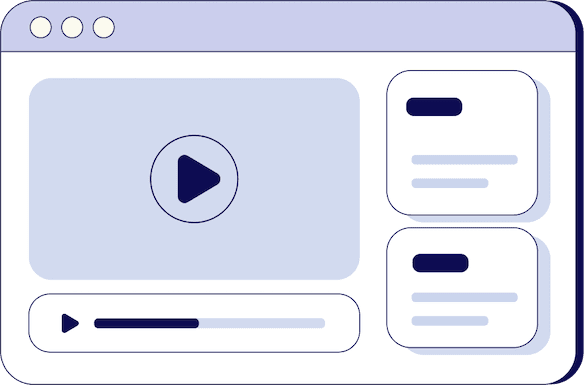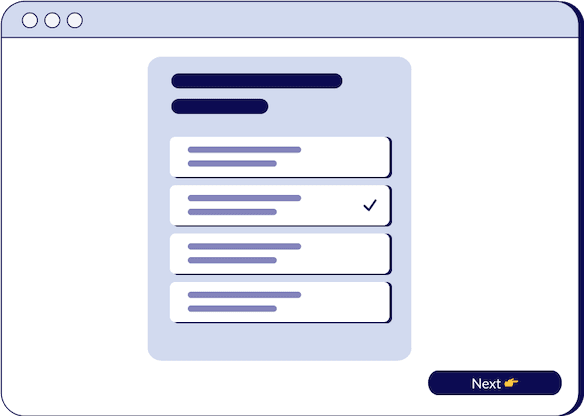.jpg&w=3840&q=75)
Nailing The First 30 Seconds of a Cold Call
Josh Braun
Founder of Josh Braun Sales
.jpg&w=3840&q=75)
- duration
- 3 min
- Average Score
- 67%
- Stars
- 5
In the competitive realm of sales, the initial 20 seconds of a cold call can make or break your chance of making a meaningful connection with a prospect. Mastering this crucial phase is essential for sales representatives, account executives, BDRs, and SDRs who aim to stand out and effectively engage their potential clients. This guide delves into effective strategies to ensure your cold calls start on the right note, fostering a constructive dialogue that can lead to successful outcomes.
The Importance of Intent
The first step to nailing the cold call begins long before you pick up the phone; it starts with your intent. Traditional sales tactics often emphasize the goal of securing a meeting at any cost, which can inadvertently apply pressure on the prospect. Such an approach is counterproductive, as it triggers a "zone of resistance," a natural reflex to sales pressure. To circumvent this, sales professionals are advised to detach from the outcome and approach each call with an open mind and the genuine intent to understand the prospect's needs.
Crafting the Opening
A well-crafted opening is your first opportunity to make a positive impression. According to sales expert Braun, the opening should include a brief introduction, a reason for the call, and a respectful request for permission to proceed. For instance, starting your call with, "Hi [Prospect's Name], my name is [Your Name]. We've never spoken before, but I'm working with [a brief mention of your role or company], and I came across your name. I was hoping to ask you a couple of questions if you have a moment?" This approach not only shows that you value the prospect's time but also positions you as polite and professional, increasing the likelihood of a favorable response.
Once you've gained permission to continue, the next step is to ensure that you're speaking with the right person. This involves a quick confirmation of the prospect's role or involvement with a particular project, product, or service. A simple, "Are you still involved with [specific task or project]?" can suffice. This step is crucial as it demonstrates your diligence in researching the prospect and ensures that your conversation is relevant and targeted.
Understanding the Prospect's Current State
The third part of Braun's cold call process shifts the focus to understanding the prospect's current situation. Instead of launching into a sales pitch, the salesperson should ask open-ended questions that encourage the prospect to share information about their challenges, needs, or goals. For example, "Many of the clients we work with use multiple tools for [a specific task]; how are you currently managing that?" This approach aims to identify potential problems or areas where your product or service could offer a solution, without making the prospect feel like they're being sold to.
Cold calling remains a cornerstone tactic for sales teams across industries, despite the evolving landscape of sales methodologies. The effectiveness of your cold call strategy hinges not just on what you say, but how you say it, and the mindset with which you approach each call. Building on foundational techniques, this guide offers advanced tips for refining your cold call approach, ensuring you not only capture the attention of your prospects within the first 20 seconds but also sustain their interest and move towards a productive dialogue.
Embrace a Mindset of Discovery
One of the most critical shifts in effective cold calling is adopting a discovery mindset. This means viewing each call not as a direct pitch but as an opportunity to learn about the prospect's situation, challenges, and needs. Sales reps should approach calls with curiosity, seeking to uncover insights that can guide how they offer value. This approach reduces resistance and fosters a more conversational tone, making prospects more receptive to the dialogue.
Timing and silence can be just as powerful as the words you choose. After your initial introduction and request for permission to proceed, give your prospect a moment to respond. This respectful pause demonstrates your willingness to listen and not just talk, setting a tone of mutual respect. Similarly, after posing a question, allow a pause for the prospect to consider their answer. These moments of silence can encourage more thoughtful responses and signal that you value the prospect's input.
Tailor Your Messaging
Generic messages fail to resonate. Advanced sales professionals know the importance of tailoring their message to the specific context of each prospect. This means going beyond superficial personalization, like using the prospect's name, to incorporating specific details about their business challenges or industry trends that might affect them. Tailoring your message shows that you've done your homework and see the prospect not as just another name on a list but as an individual with unique needs and circumstances.
Incorporating social proof into your cold calling script can significantly enhance its impact. Mentioning how you've helped similar companies or addressing common challenges faced by others in the prospect's industry can pique interest and build credibility. This doesn't mean name-dropping for the sake of it, but rather sharing relevant examples that highlight your understanding of the prospect's world and how you might assist in navigating it.
The questions you ask should aim to do more than just gather information; they should provoke thought and challenge the prospect to consider their current situation from a new perspective. Questions that highlight gaps in their current strategy or prompt them to think about the implications of maintaining the status quo can be particularly effective. This approach helps transition the conversation from a simple exchange of information to a deeper, more strategic discussion about their needs and how you can meet them.
Handling objections is an art form in itself. When faced with resistance or skepticism, the best sales reps view this as an opportunity to delve deeper into the prospect's concerns. Instead of countering objections with immediate solutions, try to understand the underlying issues. This not only demonstrates empathy but also allows you to tailor your response more effectively, showing how your product or service can specifically address their concerns.
Finally, successful cold calls don't just end with a "thank you for your time." They naturally lead to a next step, whether that's scheduling a more in-depth meeting, sending over additional information, or another action that moves the prospect further down the sales funnel. The key is to make this transition smoothly, suggesting next steps in a way that feels like a natural extension of the conversation you've just had.
Mastering the first 20 seconds of a cold call is about more than just following a script; it's about fostering genuine connections. By focusing on intent, crafting a respectful opening, confirming you're speaking with the right person, and seeking to understand the prospect's needs, you can create a foundation for meaningful conversations. These strategies not only improve the quality of your cold calls but also enhance your overall effectiveness as a sales professional. Remember, the goal is to be seen as a helpful advisor, not just another salesperson. Embrace these techniques to transform your cold calling approach and achieve better results in your sales endeavors.
How Triple Session works
Training, Testing, & Feedback
Triple Session's proven formula accelerates your sales performance through consistent, organized practice, backed by measurable results.

Bite-Sized Knowledge
Our expert-led video sessions simplify complex sales concepts into easy-to-digest 5-15 minute videos for better retention.

Test Your Understanding
After each session, there will be a quiz to test your understanding and help you improve on any areas that need more attention.

Evaluate and Grow
Get progress snapshots after each quiz to track your improvements and achieve your sales mastery goals.